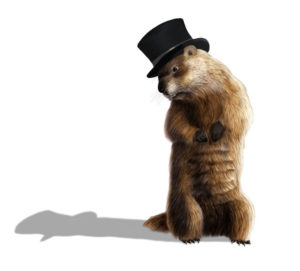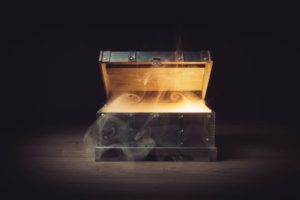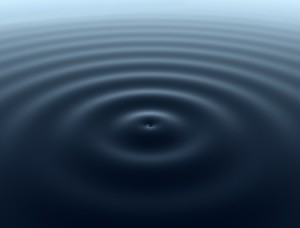It’s August. Friends, family, clients, all keep saying how “It feels like Groundhog Day.” They are referring, of course, to the 1993 movie with Bill Murray and Andie MacDowell in which a man keeps living the same day over and over again until he learns what he needs to learn in order to evolve out of the shadow of his own misanthropic nature. What people mean by that movie reference is that they are feeling trapped by the limitations imposed by the COVID pandemic shutdown. But what people might also be thinking about and  feeling a kinship with is the legendary Groundhog who pokes his nose out of his burrow on February 2 to see or not see his shadow. If it’s a bright sunny day, he (and by extension, we) can’t enjoy it because he knows his shadow is a harbinger of six more weeks of winter. Our equivalent experience, here in Southern California, is that having opened up for what seems like a nanosecond, we are being told we have to dive back into our burrows to suffer through an additional eternity of Sheltering in Place because rising COVID numbers are overwhelming our hospitals and healthcare systems. Again. For many of us, this re-submersion into hyper-cautious living is giving rise to increased feelings of depression, anxiety, overwhelm, fear. Plus, there’s no way of knowing when we can count on safely returning to our “normal” lives. The communal values that could potentially unite us into a shared sense of “we can suffer through this together” aren’t happening. We could be living like this for a long, long time. Kind of a bleak outlook. Makes a dive back under the covers to sleep until it’s over pretty tempting! If only we could.
feeling a kinship with is the legendary Groundhog who pokes his nose out of his burrow on February 2 to see or not see his shadow. If it’s a bright sunny day, he (and by extension, we) can’t enjoy it because he knows his shadow is a harbinger of six more weeks of winter. Our equivalent experience, here in Southern California, is that having opened up for what seems like a nanosecond, we are being told we have to dive back into our burrows to suffer through an additional eternity of Sheltering in Place because rising COVID numbers are overwhelming our hospitals and healthcare systems. Again. For many of us, this re-submersion into hyper-cautious living is giving rise to increased feelings of depression, anxiety, overwhelm, fear. Plus, there’s no way of knowing when we can count on safely returning to our “normal” lives. The communal values that could potentially unite us into a shared sense of “we can suffer through this together” aren’t happening. We could be living like this for a long, long time. Kind of a bleak outlook. Makes a dive back under the covers to sleep until it’s over pretty tempting! If only we could.
The tradition of Groundhog Day has ancient Celtic roots. According to legend, an old hag named Cailleach is the personification (Queen) of winter. She can make the ground freeze with her staff and when she wants winter to continue, she arranges for a sunny day on  February 1st (or 2nd, in our tradition) so that she can easily gather more firewood to keep her warm for the duration. Then she heads back inside and causes the cold, winter weather to return for another 4-6 weeks. There is a Trickster element at play here. What looks like a clear sign that spring has come, is in fact, a false beacon of hope; A mere flicker of sunshine before we are once again subducted beneath the oppressive gloom of seemingly endless winter. The disheartening heaviness that follows, having fleetingly glimpsed that one hope laden ray of light often thrusts us deeper down into the darkness. Or perhaps it seems that way. We had a momentary reminder of what it felt like to be free. And now we’re not. Again. Many people would rather never have had a break in the darkness. They’d rather keep plodding along, heads hunkered down against winter’s chill, than have a glimmer of spring that lasts only a day before forcing them back into shutdown mode. For them, the briefness of their joy illuminates even more vividly, the depth of the pain they have been numbing themselves to. Light conjures awareness of its contrasting shadow. A shadow is cast for us to see when we look back at the ground where we have been standing. The brighter the light, the darker the shadow. Its essence is measured in comparisons.
February 1st (or 2nd, in our tradition) so that she can easily gather more firewood to keep her warm for the duration. Then she heads back inside and causes the cold, winter weather to return for another 4-6 weeks. There is a Trickster element at play here. What looks like a clear sign that spring has come, is in fact, a false beacon of hope; A mere flicker of sunshine before we are once again subducted beneath the oppressive gloom of seemingly endless winter. The disheartening heaviness that follows, having fleetingly glimpsed that one hope laden ray of light often thrusts us deeper down into the darkness. Or perhaps it seems that way. We had a momentary reminder of what it felt like to be free. And now we’re not. Again. Many people would rather never have had a break in the darkness. They’d rather keep plodding along, heads hunkered down against winter’s chill, than have a glimmer of spring that lasts only a day before forcing them back into shutdown mode. For them, the briefness of their joy illuminates even more vividly, the depth of the pain they have been numbing themselves to. Light conjures awareness of its contrasting shadow. A shadow is cast for us to see when we look back at the ground where we have been standing. The brighter the light, the darker the shadow. Its essence is measured in comparisons.
The light we stepped into as we re-opened from this shutdown was enormously joyful. There was a feeling of huge release, holding the fervent promise we were finally, after months of shutdown and personal sacrifice, returning to “normal” life. In contrast, its shadow feels extremely dark and fearsome. It contains all the ills our imagination has been  blocking out of our minds by hunkering tightly down in isolation. A veritable Pandora’s Box which, by opening our doors to hope, flood unbidden into consciousness. Are we really safe? How safe? Is the threat of death by COVID completely gone? Or a little bit gone? Now we know, the answer is No. We’re not safe. Not yet. Great suffering and the shadow of death are still lurking outside. Our only recourse is to slam our doors shut again, venturing out protected as best we can. For how long, we don’t know.
blocking out of our minds by hunkering tightly down in isolation. A veritable Pandora’s Box which, by opening our doors to hope, flood unbidden into consciousness. Are we really safe? How safe? Is the threat of death by COVID completely gone? Or a little bit gone? Now we know, the answer is No. We’re not safe. Not yet. Great suffering and the shadow of death are still lurking outside. Our only recourse is to slam our doors shut again, venturing out protected as best we can. For how long, we don’t know.
It’s depressing.
Depression is debilitating. A numbness sets in rendering it difficult to motivate to do even the most mundane tasks. One sinks into an inability to feel joy, or pleasure, or even hope. And it is this inability to feel hope that is the most troubling. Holocaust survivor Viktor Frankl wrote of his devastating experience in the Nazi concentration camps. In “Man’s Search for Meaning” he observed that hope is integral to survival of life-threatening conditions and he cautioned that without a vision of oneself thriving in the future one is at much greater risk of giving up hope and dying. He recognized that he himself survived primarily because he actively imagined a future in which he would teach people about the horrors of the Holocaust so that it would never happen again.
Imagination is key to our survival and the process of imagining a future that supports the lives of all of us can bring joy. It can bring pleasure. And it definitely offers hope. Which if you remember the myth of Pandora’s Box, is the only thing left in it when a horrified Pandora slams the lid shut on her beautiful “gift from Zeus” having released into the world all the ills, toils, and burdensome sickness that bring death to humans. I used to wonder why it was important for the fate of humanity that hope remain shut in the box. I thought, wouldn’t it be better if hope were released into the world to combat all these ills?
An excerpt from T.S. Eliot’s Four Quartets comes to mind:
I said to my soul, be still, and wait without hope
For hope would be hope for the wrong thing;
The Greek word for hope (elpis) can also be translated as “expectation.” Perhaps the myth, as well as the poem seek to convey that there is value in waiting. Waiting without imposing expectations on the future. Waiting without knowing what is to come.

Eliot’s poem continues:
… wait without love
For love would be love for the wrong thing; there is yet faith
But the faith and the love and the hope are all in the waiting.
Wait without thought, for you are not ready for thought:
So the darkness shall be the light, and the stillness the dancing.
There is value in sitting in the darkness as we are being asked to do in this seemingly endless quarantine. Feeling our fears of death, of pain, of loss, our overwhelm, our sadness; feelings we are trying to escape. In learning to endure and with eyes open, to face our fears and our shadow we discover a deeper purpose to our life and to our suffering, that gives meaning to our personal existence. Waiting in the mystery of the unknown, without expectations, and acknowledging our powerlessness over the death that will come someday deepens us and connects us to Soul. Soul, in turn, connects us through our personal suffering in a very visceral way to the collective suffering of humanity. By sitting without hope, in our own pain, we learn to have compassion for the pain of others. When we expand our hope, and allow our vision for the future to become one in which the mitigation of the suffering of others comes first, then we are allowing our personal  darkness to nurture and to grow our capacity for imagining. And by joining our capacity to imagine a future in which we all thrive, we can hope, love, have faith, and think our collective way out of this pandemic box. As we are able to contain our expectations in the darkness contemplating our shadow, sitting in the mystery of the not-knowing until a deeper wisdom is ready to emerge, we will be transmuting “darkness into light and stillness into dancing.”
darkness to nurture and to grow our capacity for imagining. And by joining our capacity to imagine a future in which we all thrive, we can hope, love, have faith, and think our collective way out of this pandemic box. As we are able to contain our expectations in the darkness contemplating our shadow, sitting in the mystery of the not-knowing until a deeper wisdom is ready to emerge, we will be transmuting “darkness into light and stillness into dancing.”
It’s still hard. To wait without hope. But let’s try to use this time of quarantine and shutdown to nurture our capacity for imagining until collectively, we can create a vision for the future in which we not only survive this pandemic but thrive as a result of having experienced it.
 (626) 755-6437
(626) 755-6437
